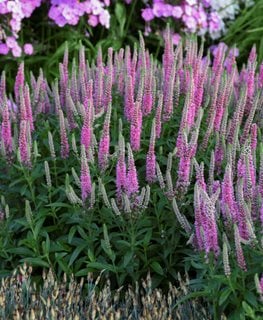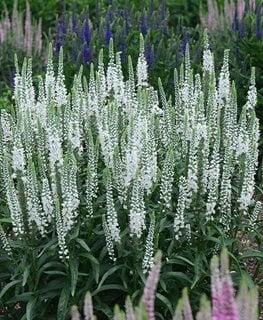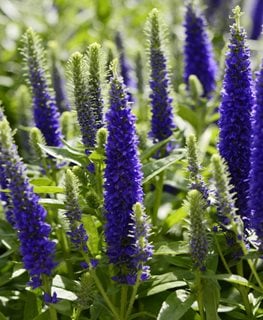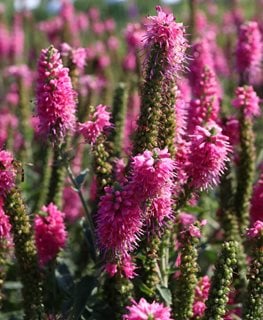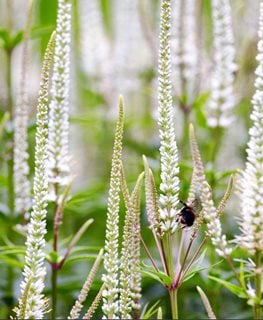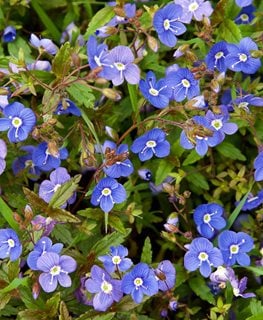SPEEDWELL - GROWING AND CARING FOR VERONICA PLANTS
This long-lived perennial makes a valuable addition to any landscape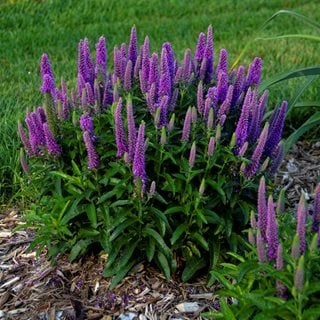
Magic Show® ‘Purple Illusion’ spike speedwell.
Photo by: Proven Winners
For gardeners with limited time, choosing carefree plants is key to a low-maintenance yard. Speedwell (Veronica) is a tough ornamental that is tolerant of different soils and watering needs, with varieties that are hardy in most regions. Sizes and forms range from creeping groundcovers a few inches high to upright flower spikes reaching several feet tall. Low growers are suited for containers, border edging and rock gardens, while taller veronicas make good cut flowers and combine well with other plants in beds and borders. Groundcovers tend to bloom in spring, while spiky forms produce flowers during the summer.
There are more than 500 species of Veronica, with origins mainly in Europe. Nearly all are long-lived perennials, particularly those grown by home gardeners, though a small percentage are annuals. Veronica flowers are attractive to hummingbirds, butterflies and pollinating insects, making them eco-friendly, too.
On this page: The Basics | Planting Instructions | Care | How to Choose the Right Veronica | Varieties | Landscaping Tips
- SPEEDWELL BASICS
- PLANTING INSTRUCTIONS
- CARE
- HOW TO CHOOSE THE RIGHT VERONICA
- VARIETIES TO TRY
- LANDSCAPING TIPS
SPEEDWELL BASICS
Zones:
3-9
Height/Spread:
3 to 48 inches tall, 8 to 24 inches wide
Exposure:
Veronica blooms best with at least 6 hours of full sun, but can tolerate partial shade.
Bloom time:
From spring to fall, some with repeat bloom.
Color and characteristics:
Flowers come in blue, purple, white or pink; with green, gold, or silver foliage. Groundcover types produce a profusion of tiny individual flowers or short flower spikes; and summer blooming, taller varieties, have clusters of flowers that grow in spikes.
Toxicity:
Veronica is not thought to be toxic to humans or pets. Some are edible, while others have herbal or medicinal qualities.
PLANTING INSTRUCTIONS
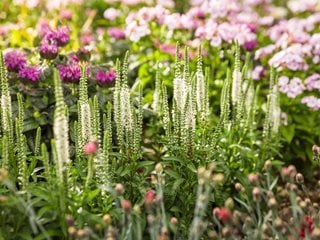
Magic Show® 'White Wands' spike speedwell. Photo by: Proven Winners
When to plant:
Transplant during cooler months in spring or fall to avoid heat stress. Start seed indoors in late winter or early spring, 4 to 6 weeks prior to your last average frost-free date. Sow seeds directly outside in mid-late spring after all danger of frost is past.
Where to plant:
Choose a sunny site with rich, well-draining soil. Veronica can tolerate a range of soil conditions and is drought-tolerant once established. Planting in too much shade can result in fewer flowers.
How to plant:
Loosen soil to the depth of the container and twice the diameter, and mix in compost. Remove the plant from the container and gently tease out the roots if potbound. Dig a hole and place the plant so the top of the root ball is level with the soil surface. Gently tamp down soil around the base and water well. Spacing will vary from 10 to 20 inches depending on the variety. When growing from seed, press seeds gently into the soil but don’t cover, as light will aid in germination. Keep moist until seeds germinate in approximately 14 to 21 days.
CARE TIPS
Pruning and maintenance:
For upright types, cut back spent flowers just below the spike to encourage rebloom. Taller varieties may need staking. All types can be divided in spring or fall every few years as needed, especially if dieback occurs at the center of the plant.
Soil:
Most veronicas do best in amended, well-draining soil. They are tolerant of clay or sand, as well as neutral, alkaline, or acidic pH.
Amendments & fertilizer:
In spring, cover soil around the plant with a thin layer of compost, then add two inches of mulch to suppress weeds and conserve moisture. Avoid covering the crown of the plant with either the compost or mulch.
Watering:
Water once a week during summer, or more as needed during hot spells.
Diseases and pests:
When planted in the ideal site, veronica is resistant to most pests and diseases. If planted in too much shade, veronica can develop fungal diseases such as powdery mildew, rust and leaf spot. Poor drainage can cause root rot. Insect problems include scale, spider mites, and thrips.
Deer resistance:
Veronica tends to be deer-resistant, though extreme conditions can result in deer grazing on plants they wouldn’t otherwise.
HOW TO CHOOSE THE RIGHT VERONICA
With so many varieties, here are some tips to consider:
For slopes, walls and bedding displays:
Use varieties with a vigorous spreading habit to cover large areas.
For edging, paths and rock gardens:
Plant groundcover types along pathways, in between pavers, at the edge of borders, or in a rock garden in combination with other alpine plants.
For containers, hanging baskets and window boxes:
Use groundcover varieties that will trail over the edge and plant in combination with other plants with mounding and upright habits. Smaller spiky types can also be combined in containers with other plants with similar growing needs.
For mixed borders:
Combine upright varieties with other summer-blooming perennials and shrubs.
VARIETIES TO TRY
LANDSCAPING TIPS
There are many ways to incorporate this reliable perennial into any landscape. Here’s how:
- Use groundcover or dwarf types in a rock garden in combination with alpine plants such as columbine, sedum, dianthus, thyme and creeping phlox.
- Alternate groundcover and dwarf varieties with different bloom times along the edge of a border or path for months of extended color.
- To create a living pathway, place stepping stones 6 to 9 inches apart and plant the spaces in between with groundcover veronica and other low growers such as creeping thyme, ajuga, creeping Jenny, and Corsican mint.
- Use trailing varieties in a container, window box, or hanging basket in combination with other plants with colored foliage or summer-blooming flowers for season-long color.
- White forms make an elegant addition to an all-white garden for a magical illuminating effect on warm summer evenings.
- Veronica combines well with many other perennials. Possible companions include tickseed, daylily, yarrow, lady’s mantle, salvia, campanula, Shasta daisy, and coral bells. For early-flowering types, combine with spring blooming bulbs such as tulips and daffodils.
RELATED:
24 Purple Flowers to Brighten Your Garden
21 Blue Flowers for Your Garden
Ideas for an Enticing Cottage Garden
Color in the Garden

